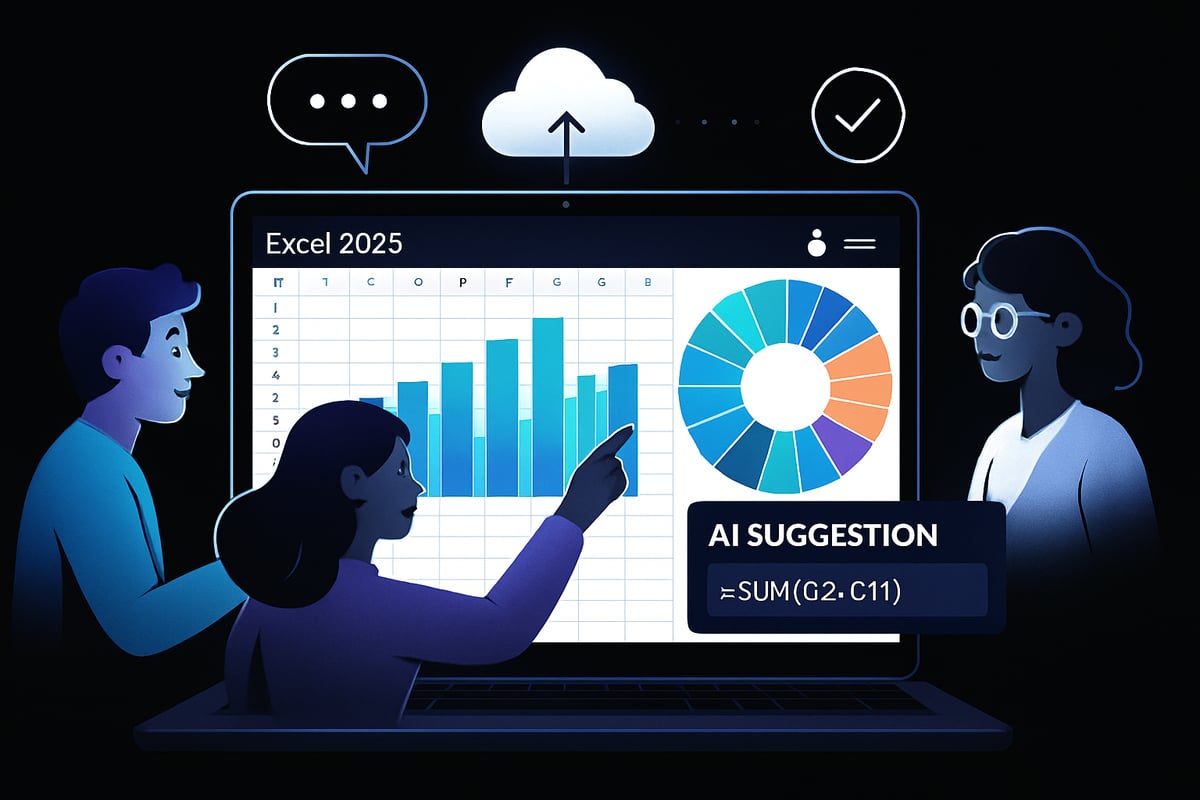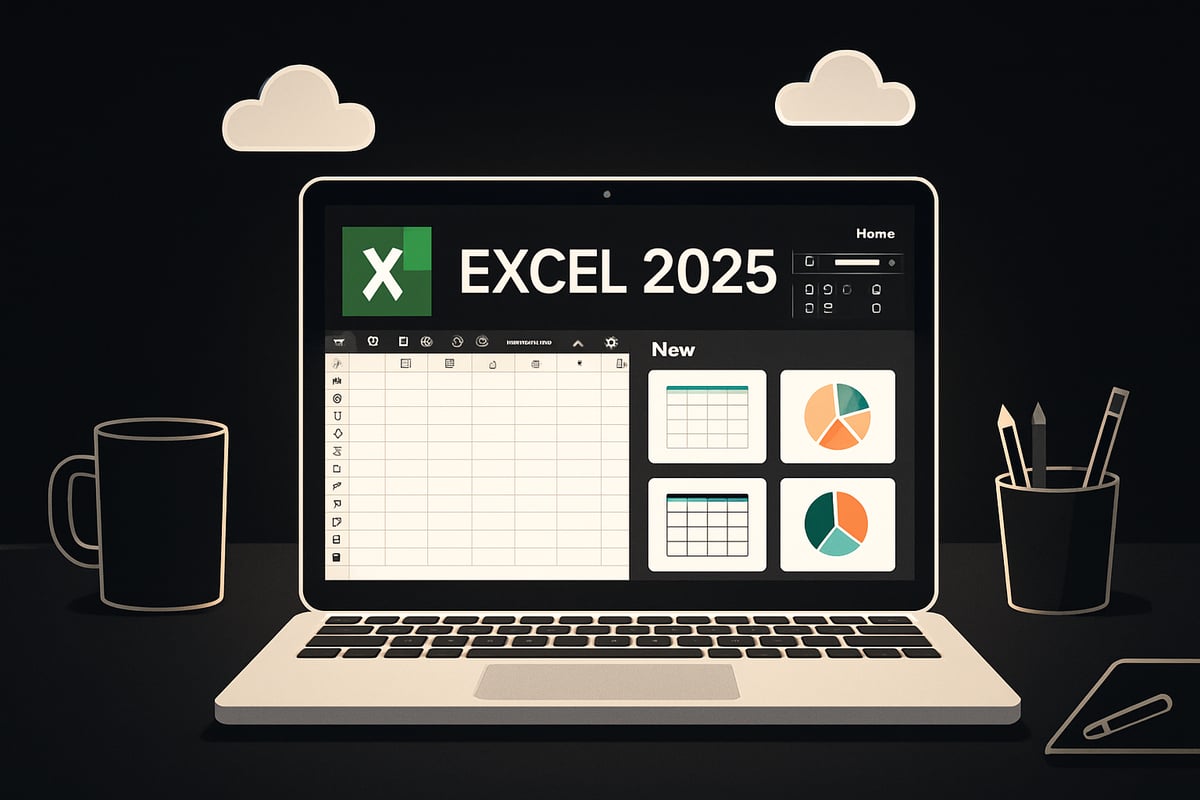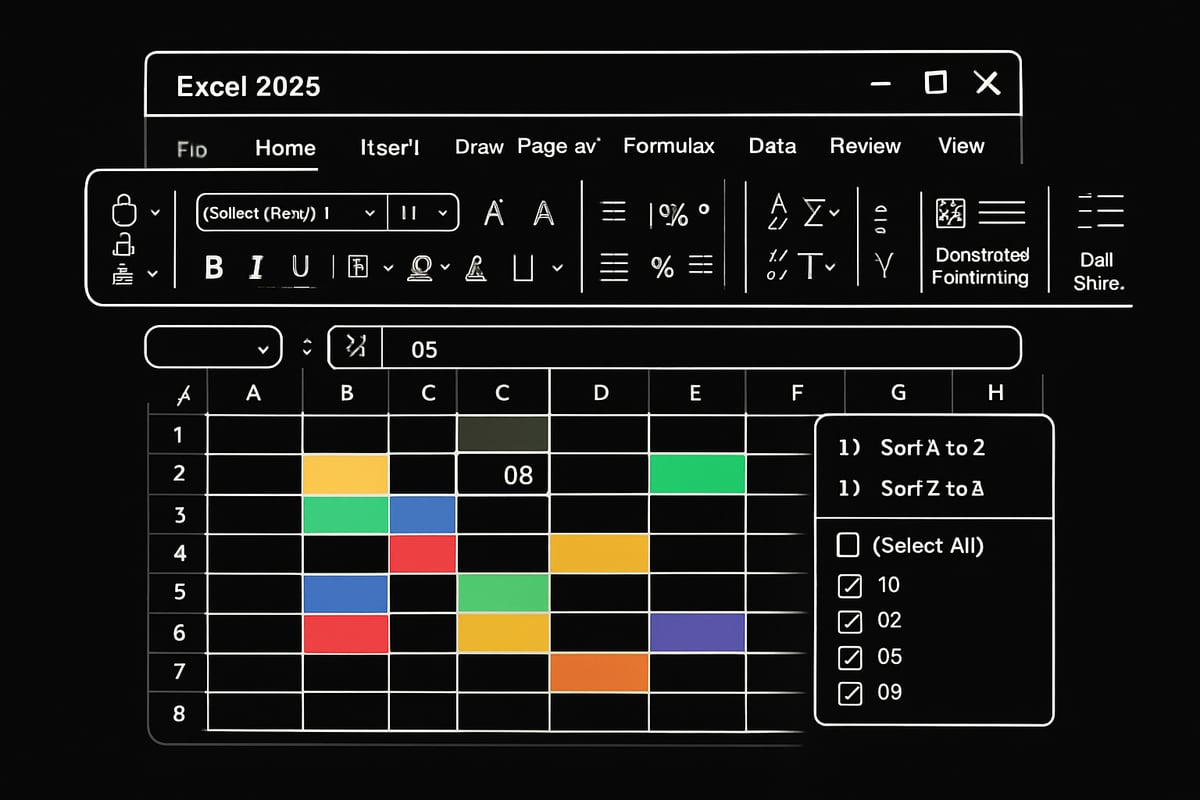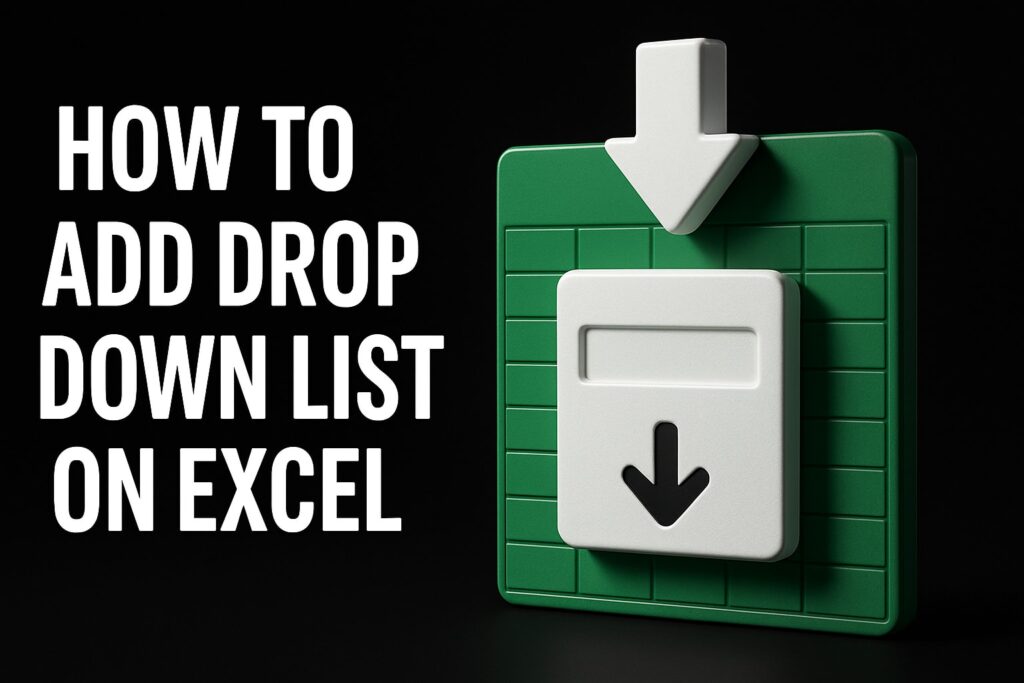Struggling to make an excel sheet that actually helps you organize data or track projects in 2025? You are not alone. Excel remains a powerhouse for business, education, and personal productivity, adapting with new features and interface updates every year.
In this guide, you will learn step by step how to make an excel sheet, whether you are just starting or want to sharpen your skills. Discover the latest tools, smart formulas, and expert tips that make your spreadsheets more efficient.
Ready to level up? Follow along and unlock the full power of Excel in 2025.
Understanding Excel in 2025: What’s New and Why It Matters
Excel remains the backbone of data management for over 1 billion users worldwide. Whether you want to make an excel budget, track projects, or analyze business data, its versatility stands unmatched. In 2025, Excel continues to evolve, balancing familiarity with transformative new features that help users at every skill level.
The Excel 2025 interface feels both fresh and intuitive. You’ll notice streamlined ribbons, more accessible tabs, and clearer navigation—all designed to help you make an excel sheet faster and with fewer clicks. The “Home” tab now includes quick access to templates, and the Start screen highlights recent files and cloud workbooks, making it easier to jump back into your projects.
Collaboration has never been easier. Real-time co-authoring lets multiple users make an excel update simultaneously, while improved cloud integration with OneDrive and SharePoint ensures your files are always within reach. Enhanced comment threads and @mentions promote clear team communication, so feedback stays organized and actionable.
Data visualization in Excel 2025 reaches new heights. You can make an excel chart with dynamic data bars, new chart types like sunburst and funnel, and AI-driven design suggestions. Features like Auto-Analyze and Smart Fill use artificial intelligence to spot trends, suggest formulas, and help you clean data with a click. Seamless integration with Microsoft 365 apps and popular third-party platforms means your Excel data flows wherever your workflow takes you. To see a full breakdown of the latest capabilities, check out the official What's New in Excel (August 2025) blog from Microsoft.
Security and compliance updates are top priorities for 2025. When you make an excel workbook with sensitive data, you benefit from enhanced encryption, improved password protection, and compliance tools that help organizations meet industry standards. Version history and AutoSave also protect against accidental changes or data loss.
Here’s a quick comparison of Excel 2025 and earlier versions:
| Feature | Excel 2025 | Excel 2021 | Excel 2016 |
|---|---|---|---|
| Real-time co-authoring | Yes | Limited | No |
| AI-powered formula suggestions | Yes | No | No |
| Dynamic data bars & new charts | Yes | Limited | No |
| Enhanced cloud integration | Yes | Yes | Limited |
| Security & compliance updates | Advanced | Moderate | Basic |
With these updates, it’s easier than ever to make an excel file that is collaborative, insightful, and secure. Whether you’re a beginner or a pro, Excel 2025 is designed to help you unlock your data’s full potential.
Step 1: Setting Up Your Excel Sheet
Ready to make an excel sheet that works for you in 2025? This step is the foundation for every project, whether you are tracking expenses, managing teams, or organizing personal data. Let’s walk through how to choose your platform, start your workbook, and save your progress so your data is always secure and accessible.
Choosing the Right Excel Version and Platform
Before you make an excel sheet, pick the version and platform that best fit your needs. In 2025, you have three main options: desktop, web, and mobile. The desktop version offers advanced features and is ideal for power users who require offline access. The web version is perfect for collaboration, allowing you to work from any device with cloud syncing, while the mobile app provides on-the-go convenience.
Consider your subscription: Microsoft 365 gives you regular updates, enhanced security, and seamless integration with other tools, while a standalone version might suit those with basic requirements. Cloud storage options like OneDrive and SharePoint ensure your files are safe and accessible anywhere. Accessibility features, such as screen readers and high-contrast modes, help make an excel sheet usable for everyone.
For beginners, or if you want to explore the basics, the Beginner Excel training guide is a great place to start. If your business needs advanced analysis or frequent teamwork, choose Excel for web for easy sharing and real-time updates.
Starting a New Workbook or Using Templates
Once your platform is set, it’s time to make an excel workbook. Launch Excel and you’ll see the new “Start” screen, where you can open a blank workbook or choose from a variety of templates. Templates for budgets, calendars, and project management help you save time and stay organized.
To use a template, select one that matches your goal, such as a project tracker for team collaboration. You can customize it by adding or removing columns, changing colors, or inserting your company logo. This flexibility means you can make an excel sheet that is truly your own, fitting your workflow and preferences perfectly.
Here’s a quick example:
| Template Type | Use Case | Customization Ideas |
|---|---|---|
| Project Tracker | Team tasks & deadlines | Add status columns |
| Budget Planner | Personal finance | Insert charts |
| Event Calendar | Scheduling events | Color-code categories |
Saving and Naming Your File
After you make an excel sheet, save it using best practices for naming and storage. Use clear, descriptive names like 2025_Marketing_Budget_v1.xlsx to ensure easy searching later. Decide where to save: OneDrive and SharePoint are excellent for collaboration and backup, while a local drive suits private or offline work.
Choose the right format for your needs: .xlsx for standard workbooks, .xlsb for large files, and .csv for data sharing. Excel 2025’s AutoSave and version history features automatically protect your changes and let you recover previous versions if needed.
For example, AutoSave helps prevent data loss during team projects, letting everyone make an excel update without worrying about accidental overwrites. Version history makes it easy to restore earlier file versions if mistakes happen.
Step 2: Entering and Organizing Data Effectively
Getting your data into shape is the heart of how you make an excel sheet work for you. This step covers the essentials: understanding the interface, entering details quickly, organizing information, and making it visually clear. With these basics, you can create sheets that are both powerful and easy to use.
Understanding the Excel Interface: Ribbons, Tabs, and Sheets
When you first make an excel sheet in 2025, the interface welcomes you with a familiar yet updated look. The Ribbon at the top organizes commands into clear tabs like Home, Insert, and Data. Each tab opens up groups of related tools, so you can always find what you need.
You can customize the Quick Access Toolbar to keep your most-used actions just a click away. For example, pinning "Format as Table" or "Undo" makes repetitive tasks faster. Tabs along the bottom help you switch between different sheets in your workbook.
Navigating between sheets is smoother than ever, whether you use keyboard shortcuts or click on sheet tabs. If you want to make an excel project more efficient, right-click a tab to rename, color code, or move your sheets.
Entering Data: Cells, Rows, and Columns
Every time you make an excel file, you start with cells—tiny boxes where text, numbers, or dates go. To enter data, click a cell and type. Use the Tab key to move right, or Enter to move down, speeding up your workflow.
For repetitive data, try the Autofill handle. For example, type "January" in a cell, drag the corner down, and Excel fills in the months. Flash Fill recognizes patterns, so if you type "J Smith" beside "John Smith," Excel learns to split first and last names for the whole column.
Here’s a quick code example for autofill:
A1: 100
A2: 101
Select both, drag down to auto-increment
When you make an excel sheet for sales, entering rows of amounts and dates becomes a breeze with these tools.
Organizing Data: Sorting, Filtering, and Grouping
Once you make an excel table, organizing data is key. Use Sort to arrange columns alphabetically, by size, or custom order. Click the Filter button in the Data tab to add drop-downs for each column, letting you display only what matters—like expenses from one category.
Grouping lets you collapse and expand sections for summaries, especially in large sheets. For example, group all entries from Q1 to see quarterly totals at a glance.
Table: Example of filtered data
| Date | Category | Amount |
|---|---|---|
| 2025-01-02 | Supplies | $200 |
| 2025-01-12 | Marketing | $500 |
With these features, you make an excel file that’s not just a data dump, but a tool for insight.
Formatting for Clarity and Impact
Formatting is how you make an excel sheet shine. Choose easy-to-read fonts and add borders for neatness. Use cell styles or themes to keep your design consistent across sheets.
Conditional formatting is especially powerful. Highlight cells above a certain value or use color scales to show performance at a glance. For instance, apply green to top sales and red to low ones, so trends jump right out.
If you want to make an excel sheet visually appealing, stick with a simple color palette, bold headers, and keep formatting consistent. This way, your data tells its story clearly and professionally.
Step 3: Using Formulas and Functions to Automate Calculations
Unlocking the real power of Excel starts when you use formulas and functions to automate your calculations. If you want to make an excel sheet that works for you, not the other way around, mastering these tools is essential.
Let’s break down everything you need to know, from the basics to the latest AI-powered features in Excel 2025.
Introduction to Formulas: Syntax and Structure
When you make an excel sheet, formulas are your primary tool for automatic calculations. Every formula in Excel starts with an equal sign =, followed by numbers, cell references, or functions.
You can write formulas like =A1+B1 to add two cells. Understanding cell references is crucial:
- Relative references (A1): Adjust automatically when you copy them.
- Absolute references ($A$1): Stay fixed, even if you move or copy the formula.
- Mixed references (A$1 or $A1): Partially fixed, great for repeating patterns.
Here’s a quick example:
=SUM(B2:B10)
=AVERAGE(C2:C10)
These formulas sum and average a range of values. When you make an excel file, start with simple formulas before moving to more complex ones.
Essential Functions for Beginners and Intermediates
To make an excel sheet truly effective, you need to use functions that streamline repetitive tasks. Some of the most-used functions include:
- SUM: Adds values (
=SUM(A1:A10)) - AVERAGE: Calculates the mean (
=AVERAGE(B1:B10)) - COUNT, MIN, MAX: Count items or find extremes
- IF: Logical test (
=IF(A2>100,"High","Low")) - VLOOKUP/XLOOKUP: Find data in tables
- INDEX-MATCH: Flexible lookups
- Text functions: Combine or extract text (
=CONCAT(A2,B2),=LEFT(C2,5))
Here’s a sample table:
| Function | Purpose | Example |
|---|---|---|
| SUM | Add numbers | =SUM(D2:D20) |
| IF | Logic test | =IF(E2="Yes",1,0) |
| VLOOKUP | Table search | =VLOOKUP(F2,G2:H10,2,0) |
With these, you can make an excel project run smoothly, calculating totals, averages, or looking up information instantly.
Leveraging New AI-Powered and Advanced Functions in 2025
Excel 2025 brings powerful upgrades to formulas and automation. Now, when you make an excel workbook, AI can suggest formulas as you type, making it easier to build complex calculations.
Key features include:
- Smart Fill: AI predicts and auto-fills patterns.
- Dynamic arrays: Return multiple results with one formula.
- LAMBDA: Create your own custom functions.
- Predictive analytics: Instantly add trendlines or forecasts.
For example, Smart Fill can automatically complete a column of full names from first and last names. The new LAMBDA function lets you define reusable formulas, perfect for advanced users.
Curious about all the latest? Check out the 5 Excel Improvements Microsoft Announced in 2025 for an overview of new formula tools and AI-driven features that will help you make an excel file smarter than ever.
Troubleshooting and Auditing Formulas
Even experts make mistakes when they make an excel model. Excel 2025 offers enhanced tools to catch errors before they cause problems.
- Formula Auditing: Use Trace Precedents/Dependents to see how formulas connect.
- Error messages: Learn what #VALUE!, #DIV/0!, and #REF! mean.
- Debugging tips: Double-click to see formula inputs, or use Evaluate Formula for step-by-step checking.
If your numbers look off, check for broken links or deleted cells. Formula auditing helps ensure that every time you make an excel workbook, your calculations are accurate and reliable.
Step 4: Visualizing and Analyzing Your Data
Turning raw numbers into clear, visual stories is where Excel truly shines. In 2025, learning how to make an excel sheet that communicates insights visually is essential for everyone, whether you’re tracking sales, managing projects, or exploring trends. Let’s break down how you can unlock Excel’s full analytic power.
Creating Charts and Graphs in Excel 2025
Charts help you make an excel spreadsheet instantly understandable. Excel 2025 brings new chart types and smarter customization, letting you present data with impact. Popular chart types include bar, line, pie, scatter, waterfall, and even interactive map charts for geographic data.
To insert a chart, select your data, then use the Ribbon’s “Insert” tab and pick a chart style. Customize further by adding titles, legends, data labels, or by adjusting colors for your brand.
Here’s a quick example to create a dynamic sales dashboard:
1. Select your sales data table.
2. Go to Insert > Recommended Charts.
3. Pick a Combo chart for sales and profit trends.
4. Add slicers to filter by region or product.
Want to learn more about building stunning dashboards? Check out Excel dashboards and data visualization for advanced tips.
Data Visualization Best Practices
Knowing how to make an excel chart is just the first step. The real magic is in clarity and storytelling. Choose the right chart for your data: trends use line charts, comparisons use bar or column, proportions use pie, and locations use maps.
Keep your visuals clean. Avoid clutter by removing unnecessary gridlines or 3D effects. Use color thoughtfully to highlight important information and guide your audience’s focus.
Best practices to follow:
- Limit the number of colors to avoid confusion.
- Use consistent formatting for similar data.
- Label axes and data points clearly.
For example, redesigning a cluttered bar chart by simplifying colors and adding clear labels can turn confusion into instant understanding. With these best practices, you’ll make an excel visualization that tells the right story.
PivotTables and PivotCharts for Deeper Analysis
When you need to make an excel workbook truly interactive, PivotTables are the answer. They let you summarize, group, and analyze large datasets with just a few clicks. Start by selecting your data, then Insert > PivotTable. Drag fields to Rows, Columns, and Values to restructure your view.
PivotCharts add visual power to your analysis, updating automatically as you filter or rearrange fields. Here’s a comparison:
| Feature | Standard Table | PivotTable |
|---|---|---|
| Static view | Yes | No |
| Dynamic grouping | No | Yes |
| Drill down | Limited | Full |
| Visual summary | No | With PivotChart |
For example, you can analyze expenses by department and month, then visualize results with a PivotChart. This approach helps you make an excel report that adapts as your data evolves.
Conditional Formatting and Data Bars
Conditional formatting lets you make an excel sheet instantly highlight key trends. Use rules to change cell colors, add data bars, or apply icon sets based on cell values. This is perfect for spotting outliers, tracking goals, or comparing performance.
To apply data bars, select your range, then Home > Conditional Formatting > Data Bars. Color scales and icon sets offer even more ways to visualize data without extra charts.
Try applying data bars to your budget tracker. You’ll see at a glance which expenses are highest, making it easier to spot trends and take action. With these tools, you make an excel file that’s both informative and visually engaging.
Step 5: Collaboration, Sharing, and Security in Excel 2025
Modern teamwork means you rarely work alone, especially when you make an excel project in 2025. Excel’s new collaboration tools make it easy to work alongside colleagues, share insights, and keep your data secure. Let’s explore how to unlock these features for seamless productivity.
Real-Time Collaboration and Comments
When you make an excel sheet today, inviting teammates is easier than ever. Just click the "Share" button, add emails, and set permissions for editing or viewing. Real-time co-authoring lets multiple users update the same file at once, while you can track every change with the activity feed.
Use comments and notes for quick feedback. Tag team members with @mentions so nobody misses important updates. This collaborative approach means everyone stays on the same page, and you reduce the risk of miscommunication in your make an excel workflow.
Sharing and Exporting Your Workbook
Sharing your work is essential when you make an excel file for a group or client. Use OneDrive or SharePoint to provide secure cloud access, or share directly by email. For external use, export your workbook to PDF or CSV formats—perfect for reports or data uploads.
Set permissions so you control who can view or edit. Here’s a quick comparison:
| Method | Best for | Permissions |
|---|---|---|
| OneDrive | Team collaboration | Editable/Read-only |
| Quick sharing | Attachment only | |
| PDF Export | Presentations | View only |
This flexibility ensures that when you make an excel document, you can easily adapt to any audience.
Protecting Your Data: Security and Compliance
Security matters more than ever when you make an excel workbook with sensitive information. Password-protect your sheets to prevent unauthorized edits. Use sheet locking to keep formulas or data intact. For confidential files, apply Information Rights Management (IRM) to restrict copying or forwarding.
Excel 2025 also includes compliance tools for industries with strict regulations. Always review your security settings before sharing, especially if your make an excel file contains financial or personal data. These steps help you maintain trust and protect your work.
Version Control and Recovery
Mistakes can happen, even when you make an excel sheet carefully. Excel’s version history lets you track changes, compare edits, and restore previous versions in just a few clicks. This is a lifesaver if you accidentally delete data or need to recover a lost worksheet.
If you encounter persistent issues, check out How to fix errors in Excel for clear solutions to common problems. With these tools, you can confidently make an excel project, knowing you can always roll back or repair your work.
Step 6: Avoiding Common Excel Mistakes and Troubleshooting Issues
Avoiding errors is crucial when you make an excel sheet, especially as files grow more complex. Mistakes can creep in at any stage, but with the right approach, you can troubleshoot issues before they become major headaches. This section guides you through common pitfalls, smart maintenance habits, and how to recognize when it’s time to call in the experts.
Recognizing and Fixing Common Errors
When you make an excel workbook, it’s easy to run into issues like typos, broken formulas, or misaligned data. Common error messages include #REF!, #VALUE!, and #DIV/0!. Excel 2025’s improved error checking tools and AI-powered suggestions make catching these mistakes faster than ever.
For example, if you see a #REF! error after deleting a column, use the “Trace Precedents” tool to find which formulas are affected. You can also rely on Top 10 New Features in Excel 2025 to explore how AI-driven data cleaning can prevent errors before they start.
Keep an eye on Excel’s built-in troubleshooting prompts, and always double-check formulas after making structural changes.
Managing Large and Complex Workbooks
As you make an excel file with more sheets or years of data, performance can slow down. Large datasets need careful management. Split data across multiple sheets or workbooks to keep things organized and responsive. Use links and references efficiently to avoid circular references or sluggish calculations.
Excel 2025 introduces new performance enhancements and features like Accessibility Assistant, making it easier to navigate and audit big workbooks. For a deeper dive, check out the New tech features for Dec 2024-Feb 2025: Excel, Teams, Power BI, Canva, Zoom, Google Sheets++ article.
Example: When handling a multi-year financial model, create separate sheets for each year, then use summary sheets for high-level analysis.
Tips for Long-Term Maintenance and Best Practices
To make an excel sheet sustainable, adopt smart habits. Use clear naming conventions for sheets and files, and document your work with a separate “Read Me” sheet. Regularly back up your files to the cloud, and use data validation to catch entry errors early.
Keep formulas and formatting consistent across your workbook. Set up a checklist for routine maintenance:
- Review formulas for accuracy
- Update documentation
- Check for outdated links
- Test backups
A well-maintained workbook saves time and prevents headaches down the road.
When to Seek Expert Help and Training
If you make an excel model and find yourself stuck with persistent errors or automation challenges, it may be time to consult an expert. Professional Excel training and support can help you solve complex problems, unlock new features, and automate repetitive tasks.
For example, automating monthly reports with advanced formulas or macros can save hours each cycle. Investing in training boosts your confidence and productivity, ensuring your Excel skills keep pace with new developments.
Don’t hesitate to reach out for help when you need it, especially if your data is business-critical.







